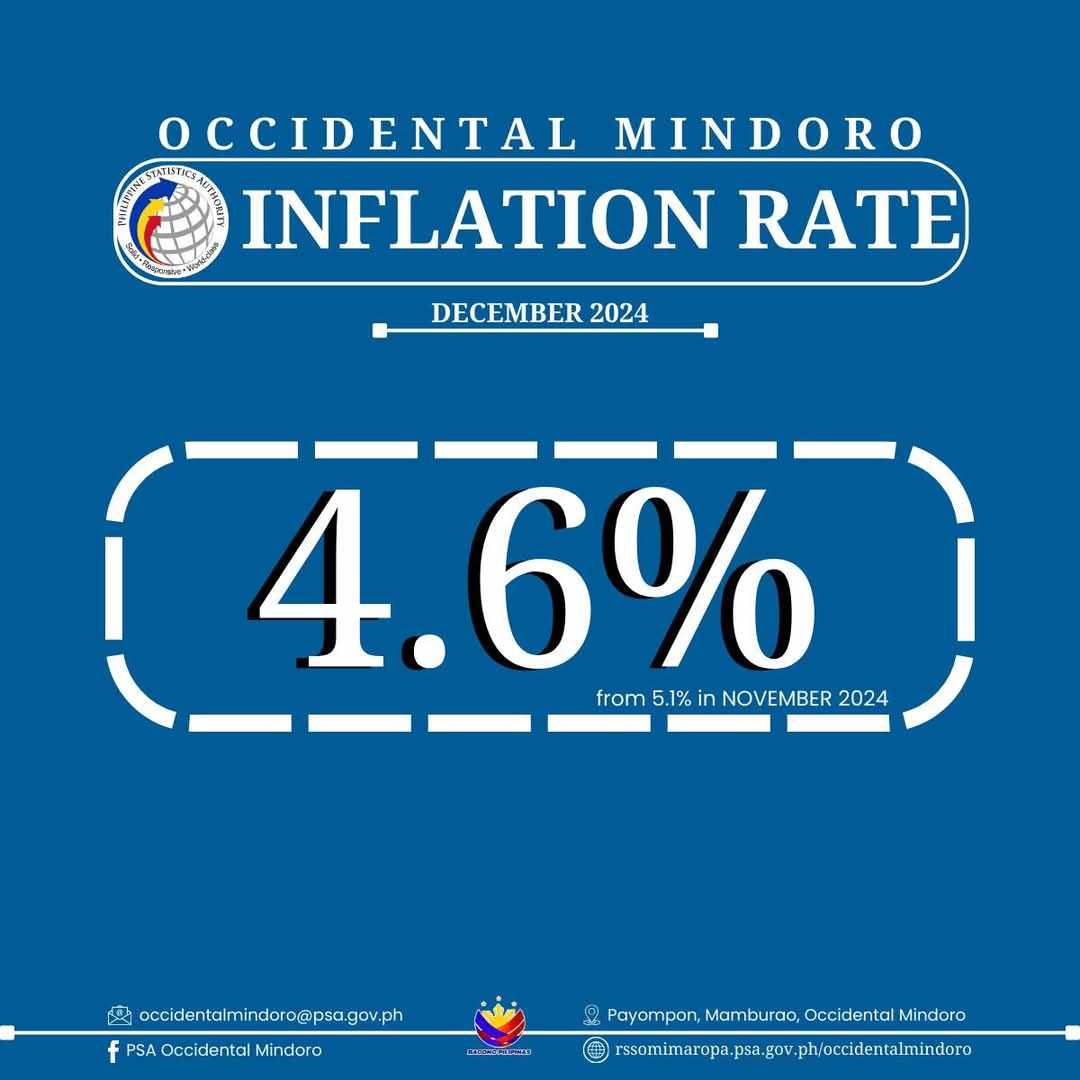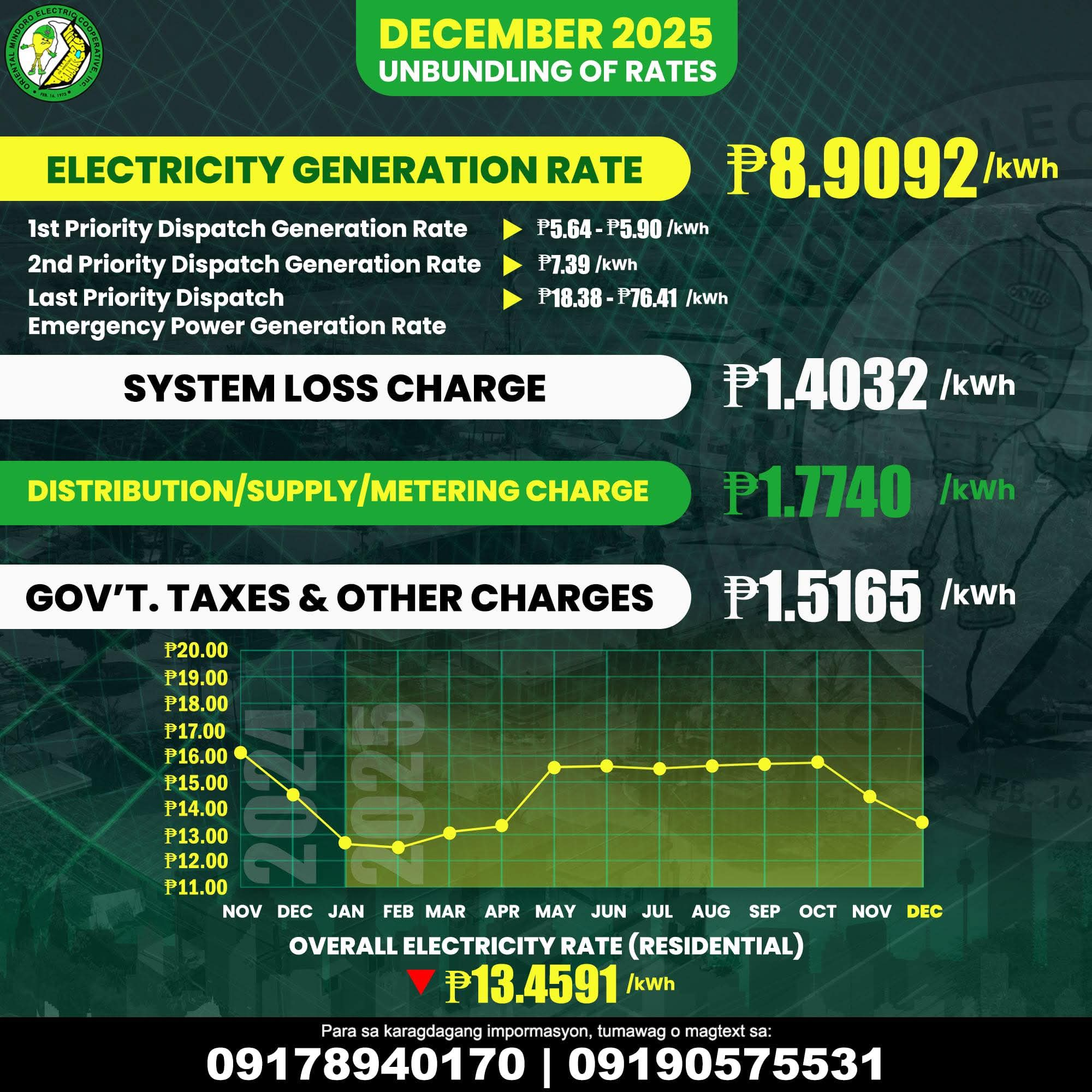Occidental Mindoro’s inflation rate dropped to 4.6% in December 2024, continuing a downward trend from 5.1% in November, according to data released by the Philippine Statistics Authority (PSA).
The province saw considerable price easements in vital sectors including food, utilities, and personal care items.
Food and non-alcoholic beverages contributed 7.9% to the overall inflation rate, while restaurants and accommodation services added 17.8%.
The purchasing power of the peso in the province has weakened since 2018, with one peso from that year now worth only 73 centavos, reflecting the cumulative impact of inflation over the past six years.

Lower-income households experienced more severe inflation effects, though showing some improvement.
The inflation rate for the bottom 30% of income households decreased to 6.3%, with food and non-alcoholic beverages accounting for 70.2% of their inflation experience. This disproportionate impact on poorer households bares the ongoing issues in food security and economic inequality in the province.
Occidental Mindoro, primarily an agricultural province, has been working to manage food prices through various LGU-initiated programs, though global and national economic pressures continue to affect local markets.









Write Your Comment